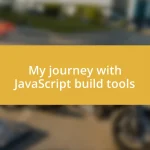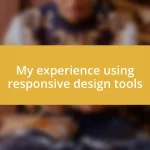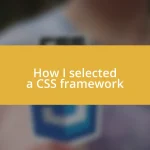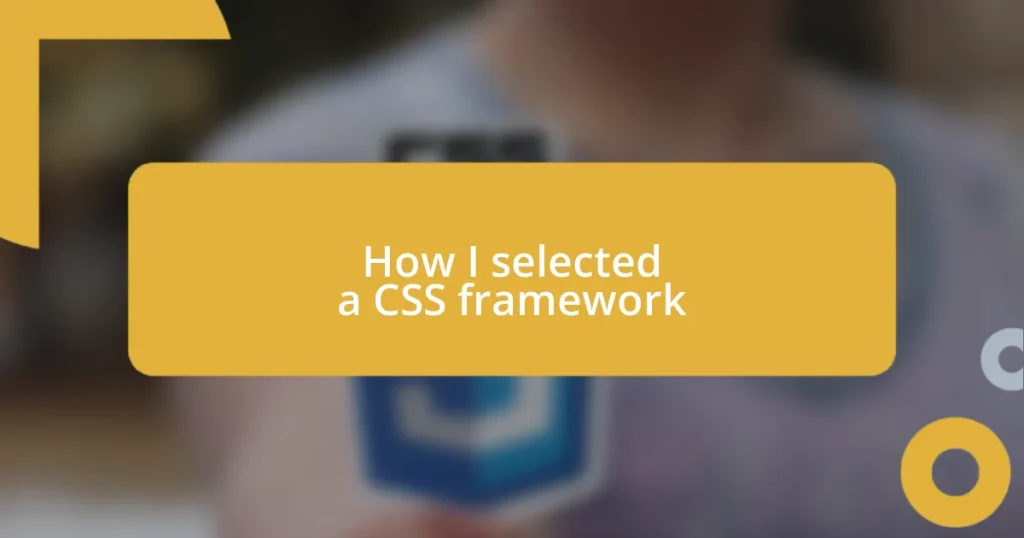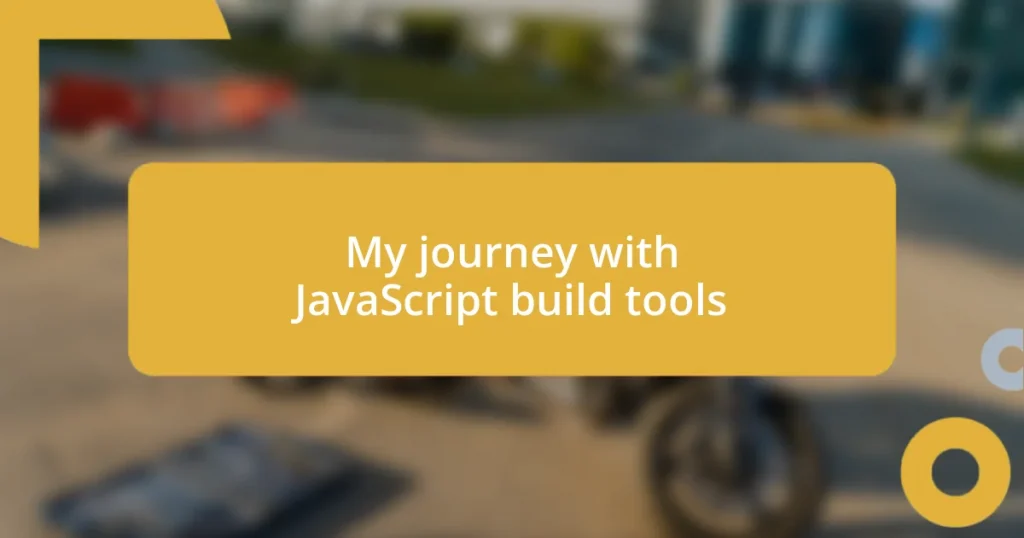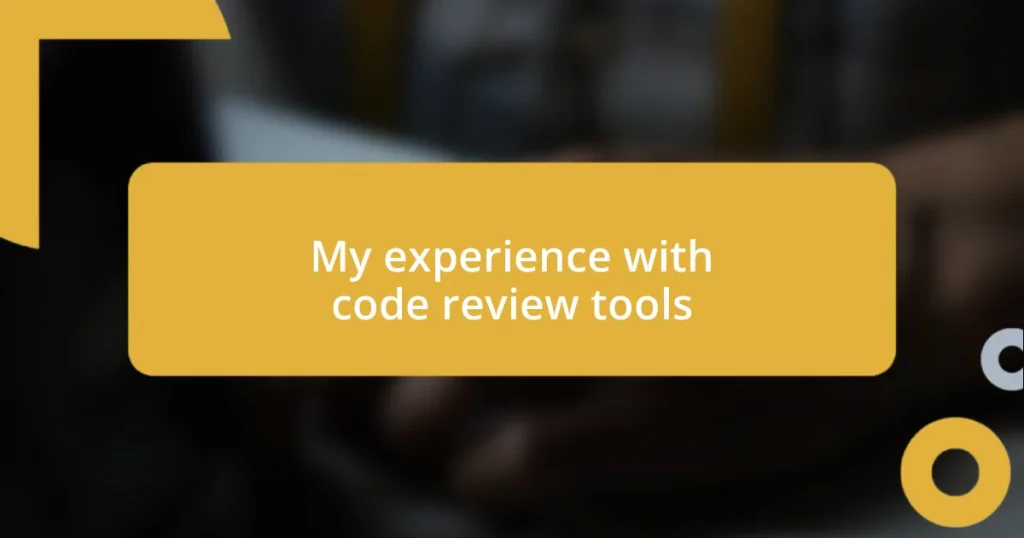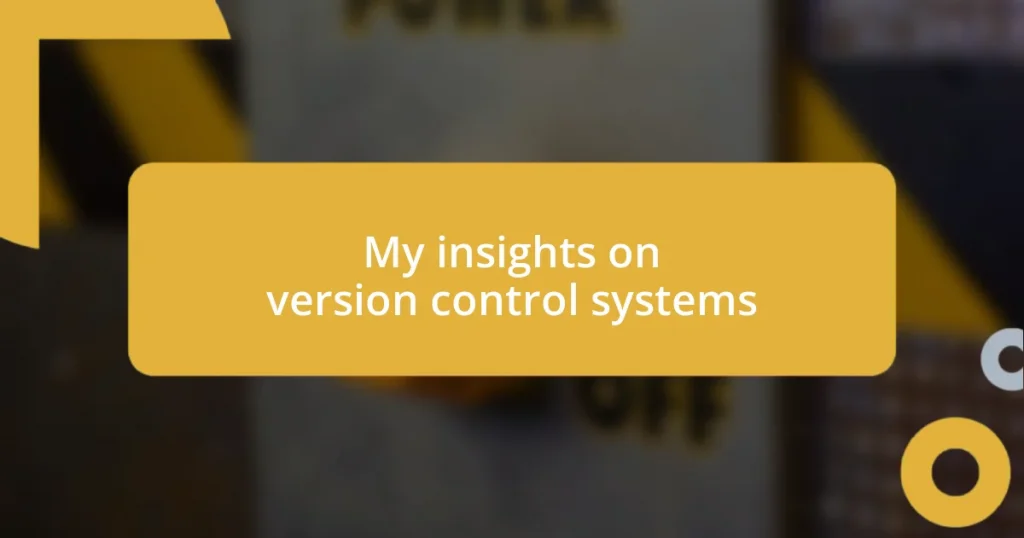Key takeaways:
- Identifying project requirements is crucial for selecting a CSS framework, including assessing project scope, design flexibility, and component availability.
- Testing prototypes with different frameworks enhances understanding of their capabilities and informs the decision-making process.
- Community support and documentation play significant roles in the long-term success and usability of a CSS framework.
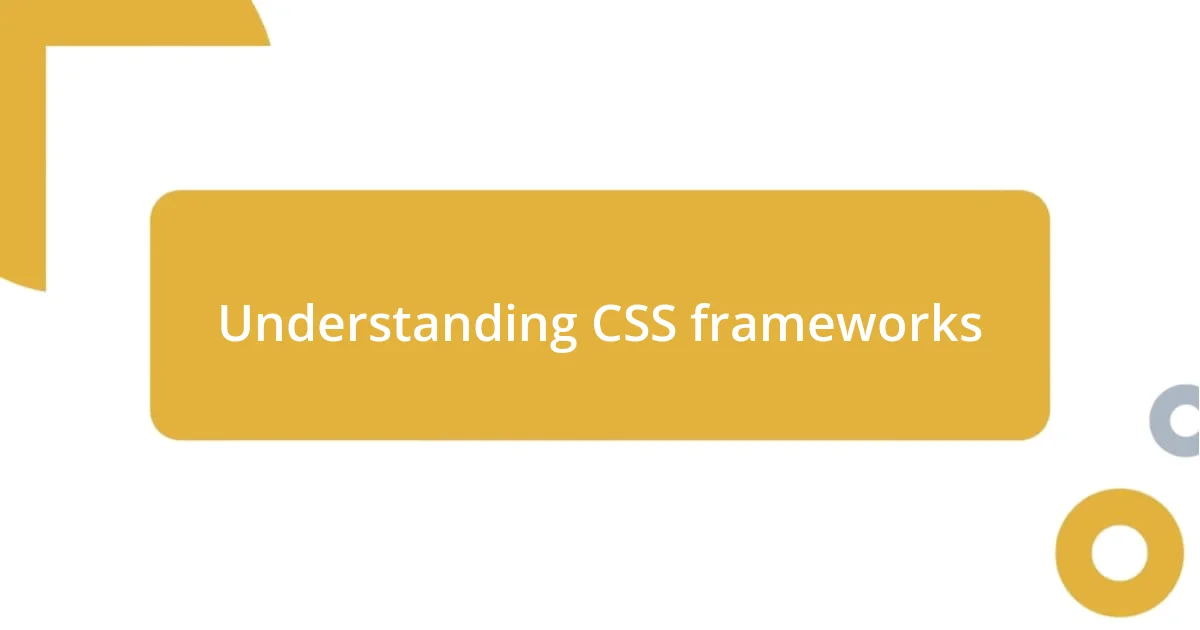
Understanding CSS frameworks
Diving into the world of CSS frameworks can feel a bit daunting at first. I remember the confusion I faced when I was trying to sort through the many options available. Have you ever found yourself stuck, wondering which framework would best suit your project? Just like you, I desired a solution that would make my designs efficient and visually appealing.
CSS frameworks are essentially pre-prepared libraries that make styling websites faster and easier. Think of them as a strong foundation for your building, allowing you to focus more on creativity rather than coding minutiae. I often found that using a framework saved me countless hours of work, as it eliminates the repetitive process of writing CSS from scratch.
In my experience, adopting a CSS framework not only streamlined my workflow but also improved my projects’ consistency. I recall launching a site using Bootstrap, and it brought an instant level of professionalism that I struggled to achieve on my own. Isn’t it satisfying when a tool amplifies your capabilities and brings your vision to life?
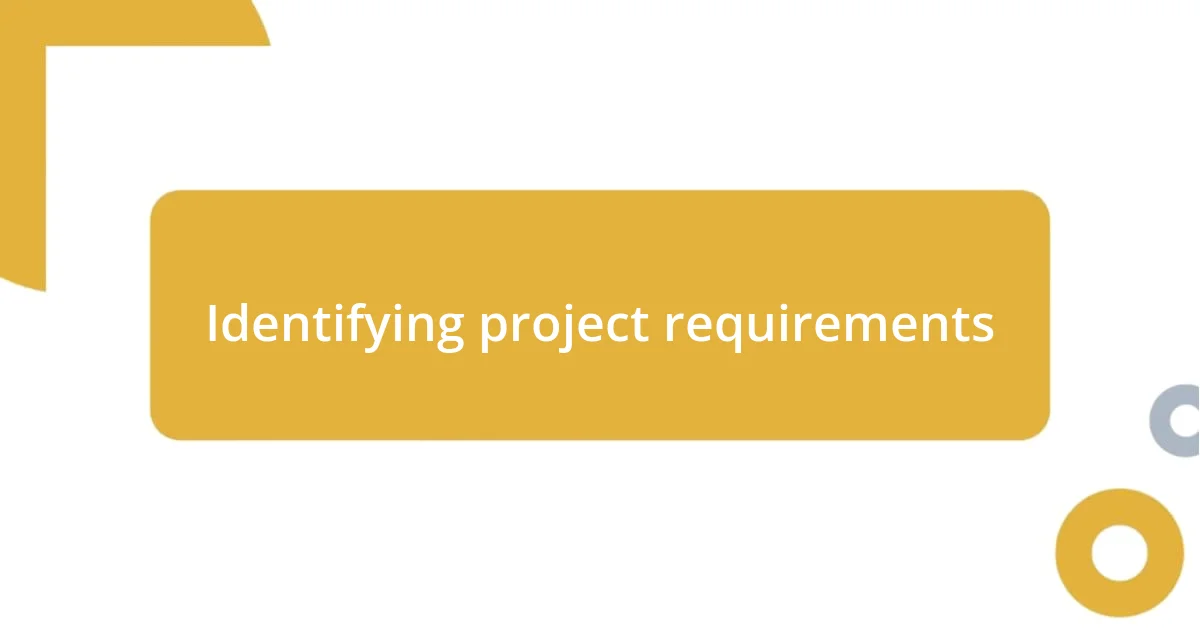
Identifying project requirements
When I first embarked on selecting a CSS framework, the first step was identifying the specific requirements of my project. I found it crucial to analyze what I truly needed for the design and functionality. This meant looking closely at the expected user experience, the type of content to be displayed, and even the target audience’s preferences. It felt a bit overwhelming at times, but mapping out my goals brought clarity to the process.
To streamline my decision-making, I created a checklist of key requirements:
– Project scope: What are the main objectives? Is it a simple landing page or a robust web application?
– Design flexibility: How much customization do I desire? Am I looking for something that adheres closely to established design principles?
– Component availability: Does the framework offer pre-built components that I can leverage?
– Browser compatibility: Are there specific browsers my audience predominantly uses?
– Learning curve: How steep is the learning curve for the framework? Can I get up to speed quickly, or will it take weeks of adjustment?
By diving deeply into these aspects, I could better align my chosen framework with my project needs, ultimately leading to a smoother development experience.
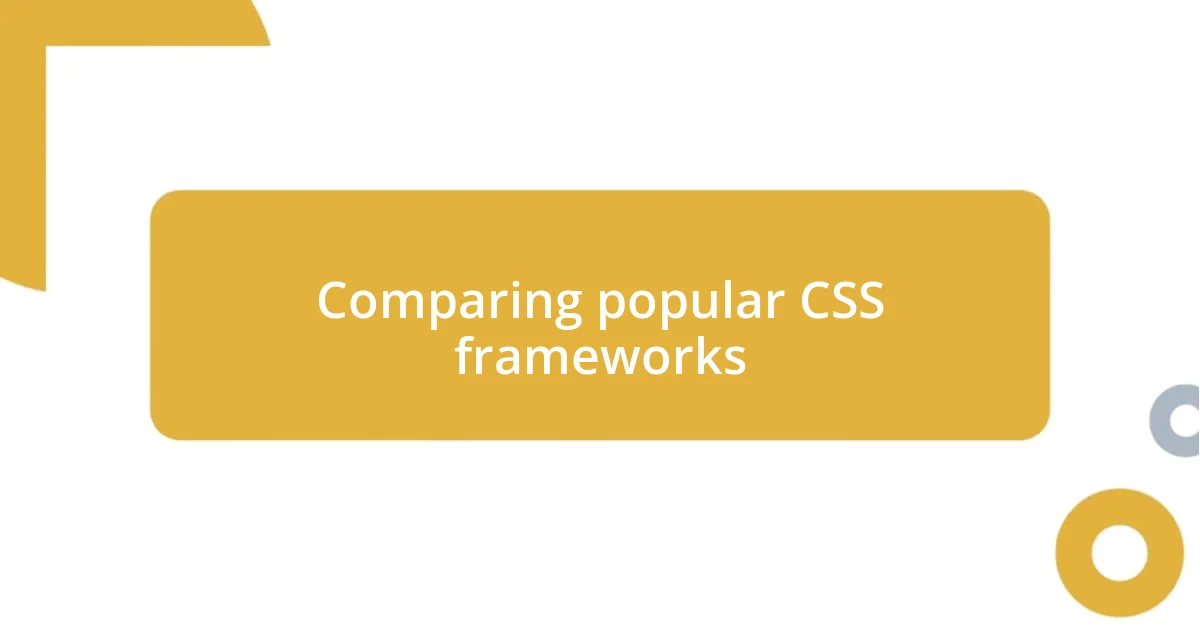
Comparing popular CSS frameworks
When I started comparing popular CSS frameworks, I quickly realized that each one had its strengths and weaknesses. For instance, Bootstrap stood out for its extensive documentation and ready-to-use components, which initially made it my go-to choice. However, as I delved deeper, I found that Tailwind CSS offered unparalleled customization, allowing me to create unique designs without the constraints of predefined styles. The choice often boils down to personal preferences and project needs.
Another notable framework is Bulma, which caught my attention for its simplicity and responsiveness. I recall a project where time was of the essence, and Bulma’s clean syntax enabled me to quickly prototype layouts and iterate designs. On the other hand, Foundation appealed to me for its flexibility and strong grid system, which felt like a blessing when working on complex layouts. It’s interesting how the same set of requirements can lead different developers to different frameworks.
To really make an informed decision, I compiled key features into a comparison table. This visual aid helped me weigh the pros and cons of each framework side-by-side, which was incredibly useful during the selection process.
| Framework | Strengths |
|---|---|
| Bootstrap | Extensive components, great documentation |
| Tailwind CSS | Highly customizable, freedom in design |
| Bulma | Easy to use, responsive design |
| Foundation | Flexible, strong grid system |
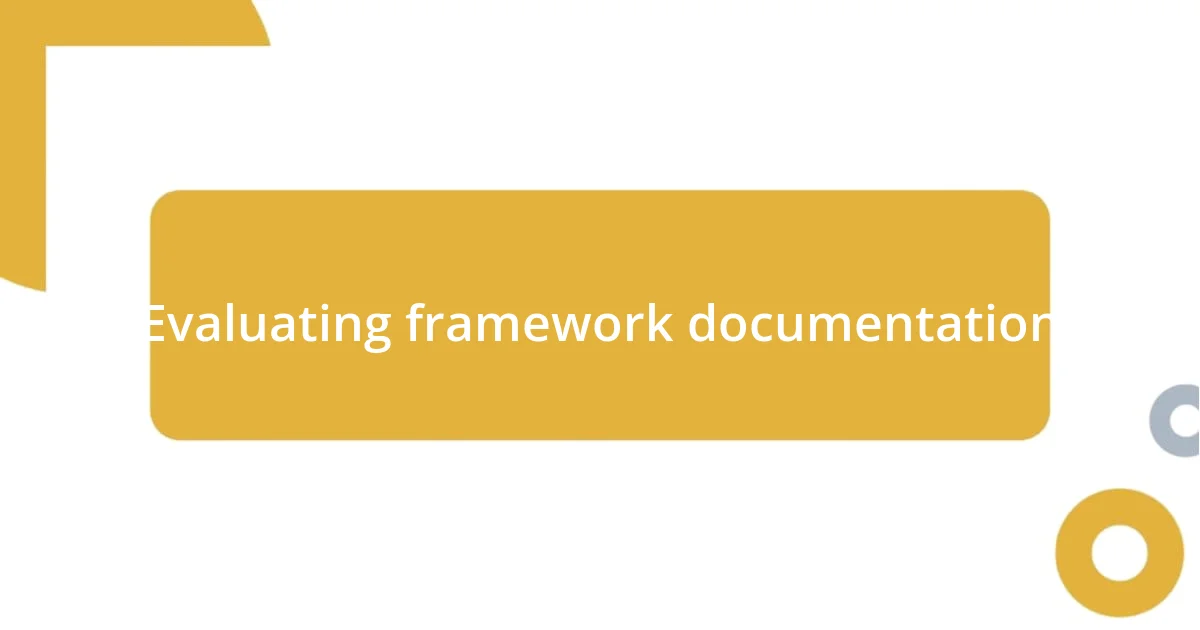
Evaluating framework documentation
When I started evaluating framework documentation, I quickly discovered how crucial it was to have clear and comprehensive resources at my fingertips. I remember sifting through multiple frameworks and feeling a wave of relief when I found documentation that was not only extensive but also easy to navigate. Does it really matter? Absolutely! Quality documentation can be the difference between frustration and a smooth development process.
As I dove deeper into various CSS frameworks, I paid attention to the examples provided in their documentation. I recall getting excited when I found a framework that included live code snippets. It allowed me to experiment right there, which was incredibly helpful. I ask myself now—how can you make a solid decision without seeing firsthand how the framework performs? For me, transparent examples made all the difference in visualizing how each framework could shape my project.
Another aspect I valued greatly was the community around the documentation. I often found myself returning to forums and GitHub discussions, and it felt comforting to see an active community engaged with the framework. When I had questions, knowing others had faced similar challenges was reassuring. How often do you rely on community support when tackling a tricky coding problem? For me, it became an essential part of my decision-making process, confirming that I was on the right path with my framework choice.
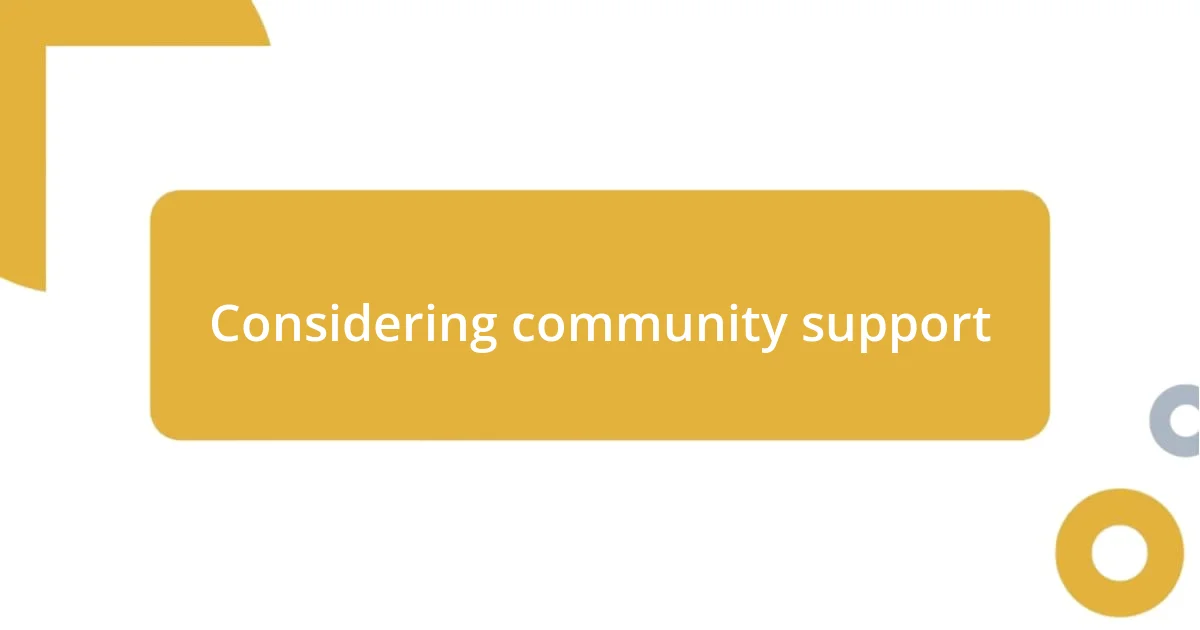
Considering community support
When considering community support, I quickly realized how vital it is for long-term success with a CSS framework. I remember the times when I hit roadblocks with a project; those moments were always less stressful when I knew I could turn to online communities like Stack Overflow or the framework’s GitHub page. Engaging with fellow developers who had probably faced similar hurdles not only provided solutions but also created a sense of camaraderie.
I’ve seen firsthand how an active community can significantly enhance the learning experience. For instance, when I was struggling to implement a complex feature in Tailwind CSS, I posted my question on a forum and was pleasantly surprised by the prompt responses from experienced users. Those interactions not only solved my issue but also motivated me to contribute back, solidifying my connection with the framework’s community. It almost feels like being part of a collaborative team, doesn’t it?
Additionally, the breadth of community-created resources really swayed my choice. Whether it was blogs, tutorials, or even Slack groups, knowing that I had access to a wealth of shared knowledge was reassuring. I often ask myself, how much easier would projects be if we could stand on the shoulders of giants? With a robust community backing a framework, I felt more confident exploring its capabilities, knowing support was only a click away.
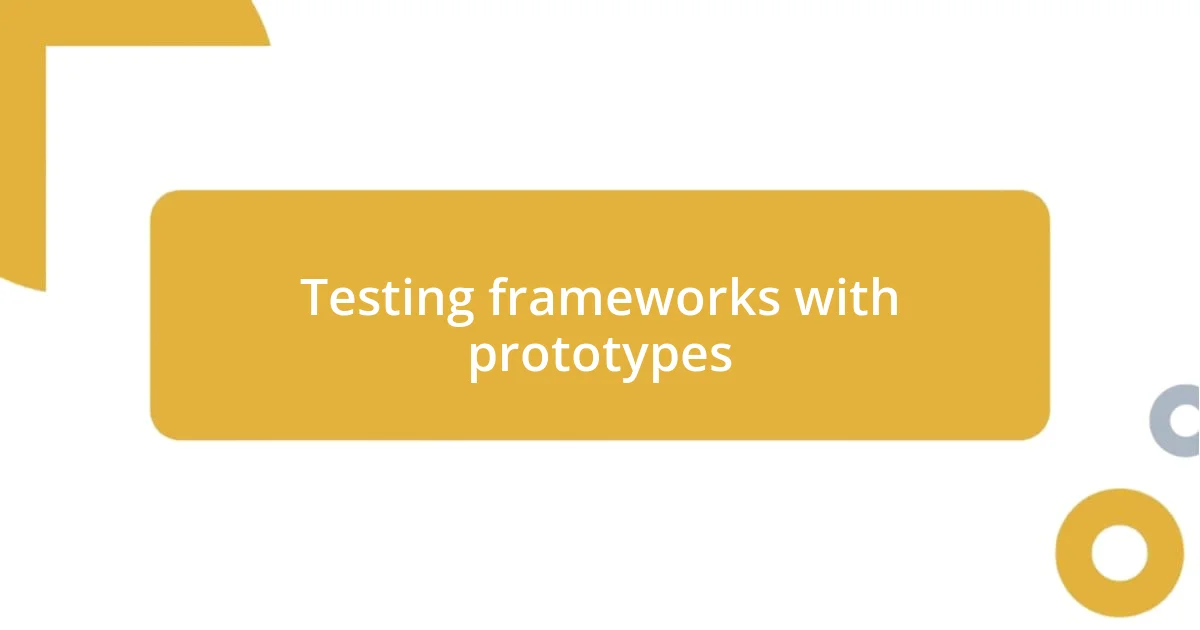
Testing frameworks with prototypes
Testing prototypes with various CSS frameworks quickly became an eye-opening experience for me. I distinctly remember my first attempt at building a prototype for a personal project; I was feeling overwhelmed but excited all at once. By testing frameworks through prototypes, I was able to grasp how each could influence design and functionality in real time. Who doesn’t want to see their ideas come to life directly in front of them? This hands-on approach made the evaluation process not just easier, but genuinely enjoyable.
During my prototyping phase, I focused on responsiveness and customization capabilities. I vividly recall using Bootstrap and realizing how effortlessly I could create a mobile-first design. It was like a light bulb went off! I could play around with components, tweaking styles to match my vision. This freedom to experiment without the pressure of a full-scale project was liberating. Could any other framework provide the same flexibility while maintaining design integrity? My experience convinced me that an intuitive testing process was essential in selecting the right CSS framework.
There were times when prototypes didn’t work out as I expected, and that’s okay! I remember a specific instance with Foundation where my design looked great on desktop but fell apart on smaller screens. Instead of getting frustrated, I used this as a learning opportunity. It reinforced the importance of thorough testing. After all, what’s the point of a framework if it doesn’t handle various scenarios gracefully? Embracing these moments helped me refine my criteria for selection, ultimately leading me to make a more informed decision. How many developers have faced the same challenge and turned it into a stepping stone? I don’t think I’m alone in this!
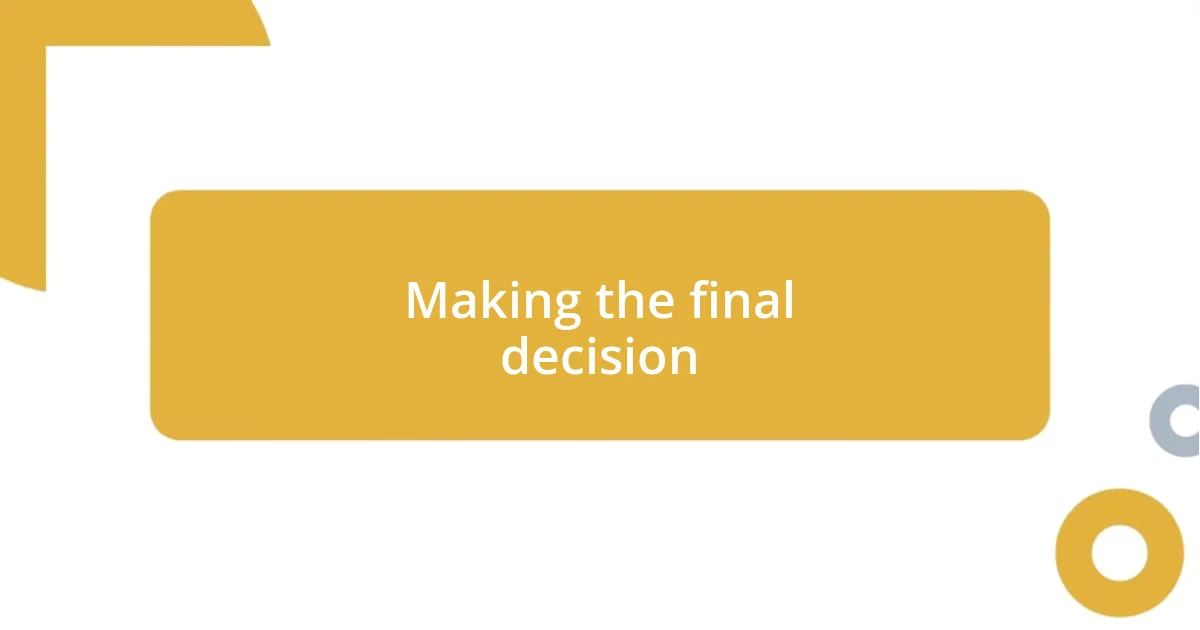
Making the final decision
Making the final decision was undoubtedly a pivotal moment in my selection process. After narrowing down my options, I found myself weighing the pros and cons of my top choices late one evening, when I suddenly thought about how past experiences with each framework influenced my feelings. It wasn’t just about features or documentation; it was about how each one resonated with me on a personal level. Have you ever felt connected to a tool because of successful projects it helped you complete? That emotional tie can be just as important as technical specifications.
As I gathered feedback from colleagues and peers, the insights provided were invaluable. I shared my hesitations regarding one particular framework, and a friend passionately advocated for it, recounting their own successes. Listening to their stories made me reconsider my initial doubts. Could it be that sometimes we overlook greatness because of our biases? In that moment, I realized that a strong endorsement from someone I respected could easily tip the scales.
Ultimately, my decision came down to how I envisioned the framework fitting into my workflow. I liked the idea of a framework that felt like a second skin during development—something that molded to my style rather than imposed rigid structures. Reflecting on my journey, I answered an important question: which framework would allow my creativity to flourish? This thought not only solidified my choice but also excited me about future projects, setting a positive tone for what lies ahead.
